Types Of Fabric Use In Chikankari
Chikankari is a rich and diverse handcraft that blends delicate, traditional stitches with creative expression. From the soft, three-dimensional Murri stitch to the luxurious sparkle of Tilla and Shisha work, each stitch contributes to the intricate and stunning designs that define Chikankari. Whether it is the subtle elegance of Bakhia or the bold statement of Rangoli, the stitches of Chikankari elevate garments to new levels of beauty, sophistication, and artistry. These stitches, passed down through generations, continue to inspire modern fashion, providing a perfect fusion of heritage and contemporary style. For fashion lovers and artisans alike, the stitches of Chikankari are not just techniques but a celebration of craftsmanship, culture, and timeless beauty. Whether you’re looking to invest in a traditional piece of Chikankari or create your own, understanding the stitches behind this ancient craft helps you appreciate the skill and artistry involved in each piece.
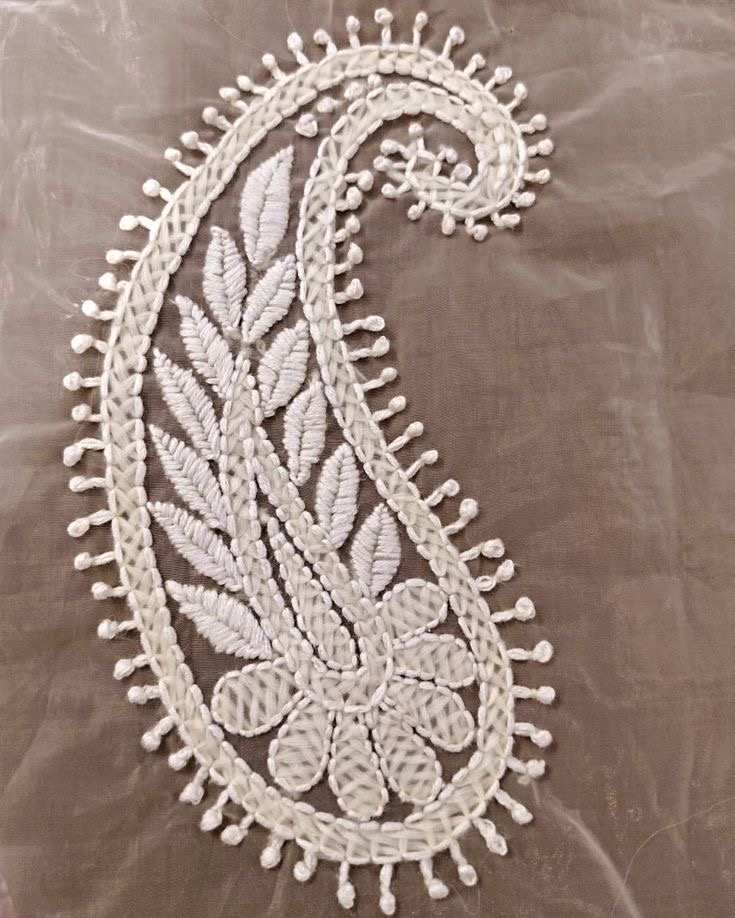
Types of fabric use in chikankari
Chikankari is a traditional form of hand-embroidery that originated in the Indian subcontinent, particularly in the city of Lucknow. Known for its exquisite and delicate threadwork, it has evolved over centuries to become one of the most sought-after crafts in Indian textiles.
Chikankari embroidery traces its roots back to the Mughal era when Empress Noor Jahan, the wife of Emperor Jahangir, is believed to have introduced this art form to India. The craft was initially a skill practiced by royal women and the Mughal elite, with the fine craftsmanship of Chikankari becoming an integral part of royal attire. Over time, it spread across regions, with Lucknow emerging as the epicenter of Chikankari embroidery.
Here are some importance of fabric in Chikankari embroidery and how the choice of fabric affects the final piece.
- Cotton: The Classic Choice for Chikankari
- Why cotton is the most popular fabric for Chikankari embroidery.
- The softness and breathability of cotton.
- Examples of cotton-based Chikankari designs: Kurtis, sarees, dupattas.
- Benefits of using cotton for intricate embroidery work.
2. Georgette: A Lightweight and Elegant Fabric
- Georgette’s fluidity and its appeal for Chikankari.
- How it drapes beautifully and enhances embroidered designs.
- Common Chikankari pieces made with georgette.
- Popularity of georgette in contemporary fashion.
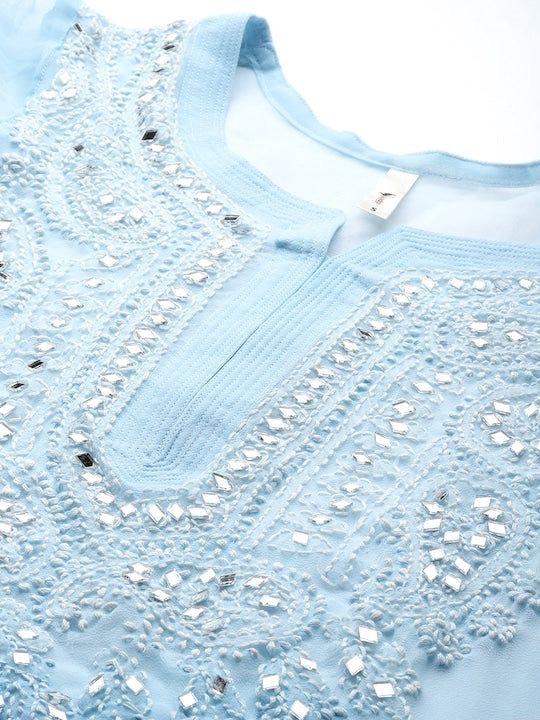
3. Silk: Luxury and Grace in Chikankari
- The timeless appeal of silk in embroidery.
- The smooth texture of silk that complements delicate Chikankari stitches.
- Different types of silk used (e.g., raw silk, crepe silk).
- Ideal occasions and attire made with silk Chikankari embroidery.
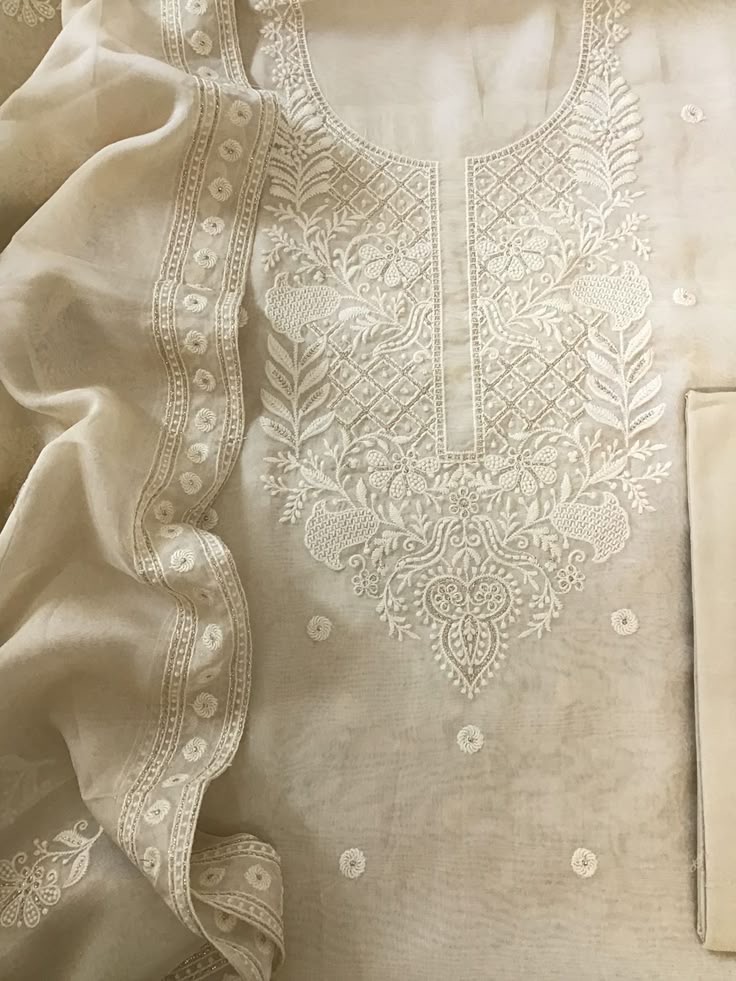
4. Chiffon: The Delicate and Flowing Fabric
- The unique texture of chiffon and how it complements Chikankari.
- Lightness of chiffon that works perfectly with fine embroidery.
- How chiffon enhances the elegance of Chikankari dupattas and sarees.
- Challenges of working with chiffon and tips for embroidery.
5. Linen: The Modern and Sustainable Fabric Choice
- Linen’s growing popularity in modern Chikankari fashion.
- The rustic yet sophisticated feel of linen.
- Why linen works well for both casual and formal Chikankari attire.
- Benefits of choosing linen for sustainable fashion.

6. Organza: The Ethereal and Elegant Fabric
- Organza’s crisp and sheer nature.
- How it enhances the visual appeal of Chikankari embroidery, giving it a light, airy quality.
- Common uses of organza in Chikankari – bridal wear, evening wear, and more.
- The challenge of working with organza and tips for using it effectively.

7. Cotton-Silk Blend: A Fusion of Comfort and Luxury
- Combining the best qualities of cotton and silk.
- Durability of cotton and the luxurious sheen of silk.
- Where to use cotton-silk blends for Chikankari: Wedding wear, formal events.
- Popularity of cotton-silk blends in contemporary fashion trends.
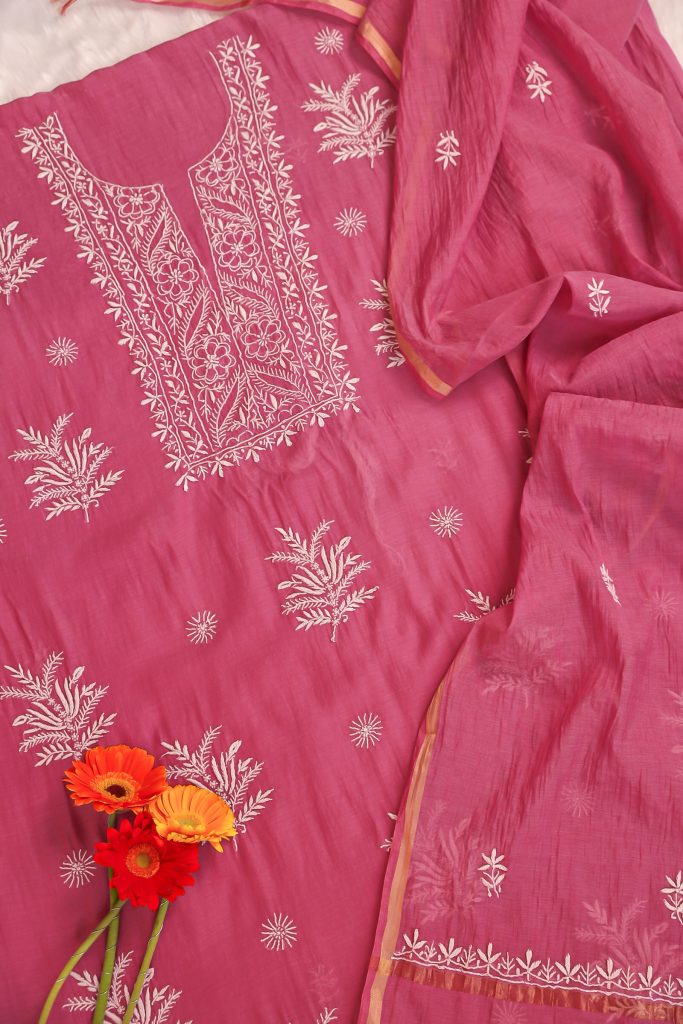
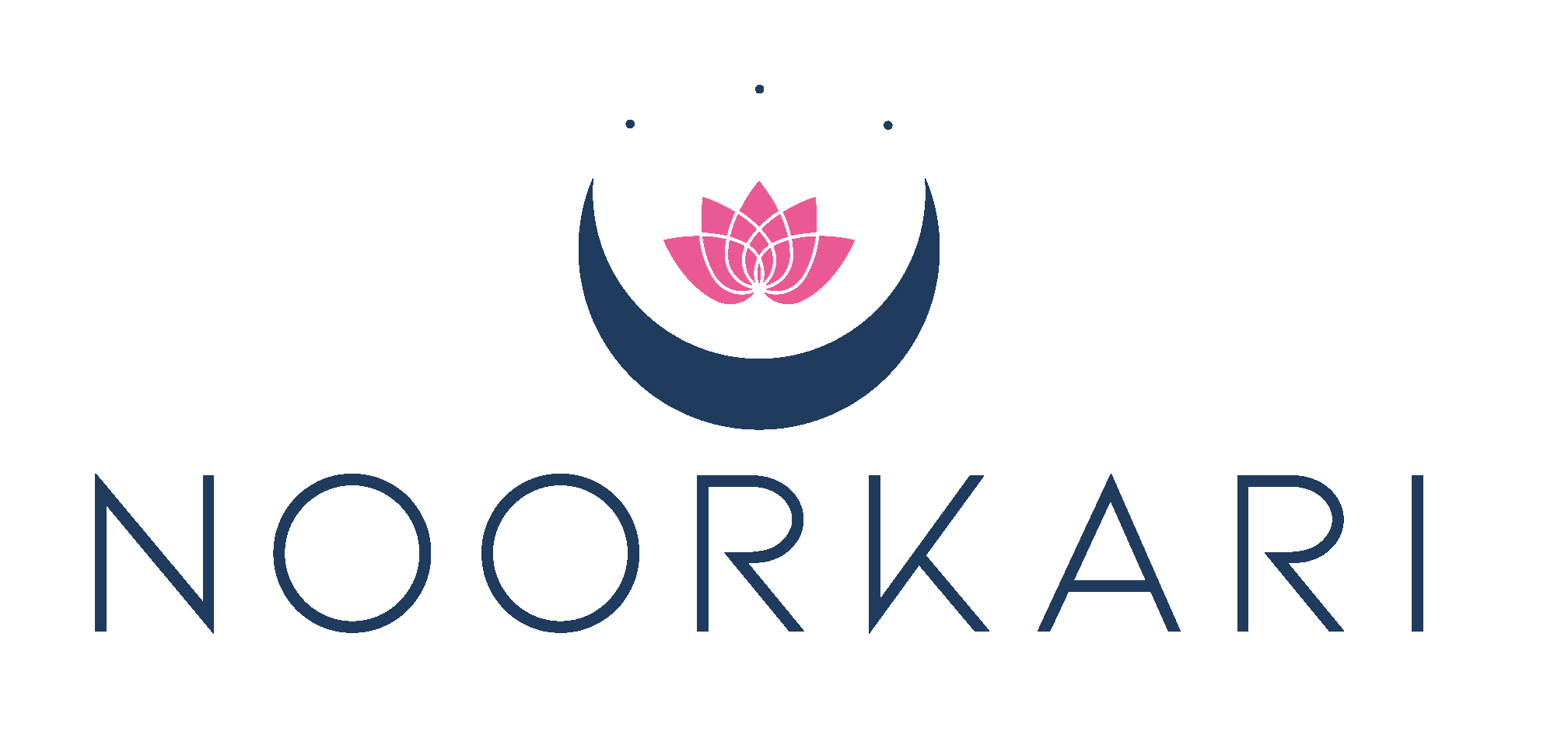


Add comment